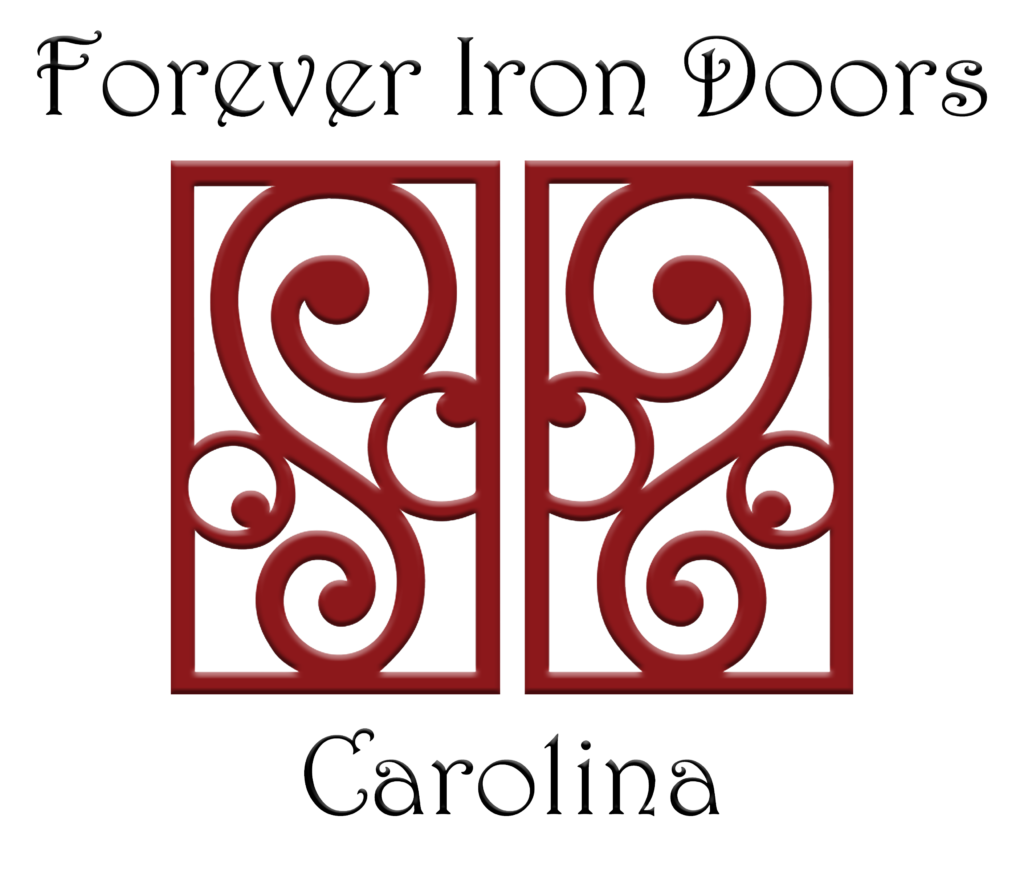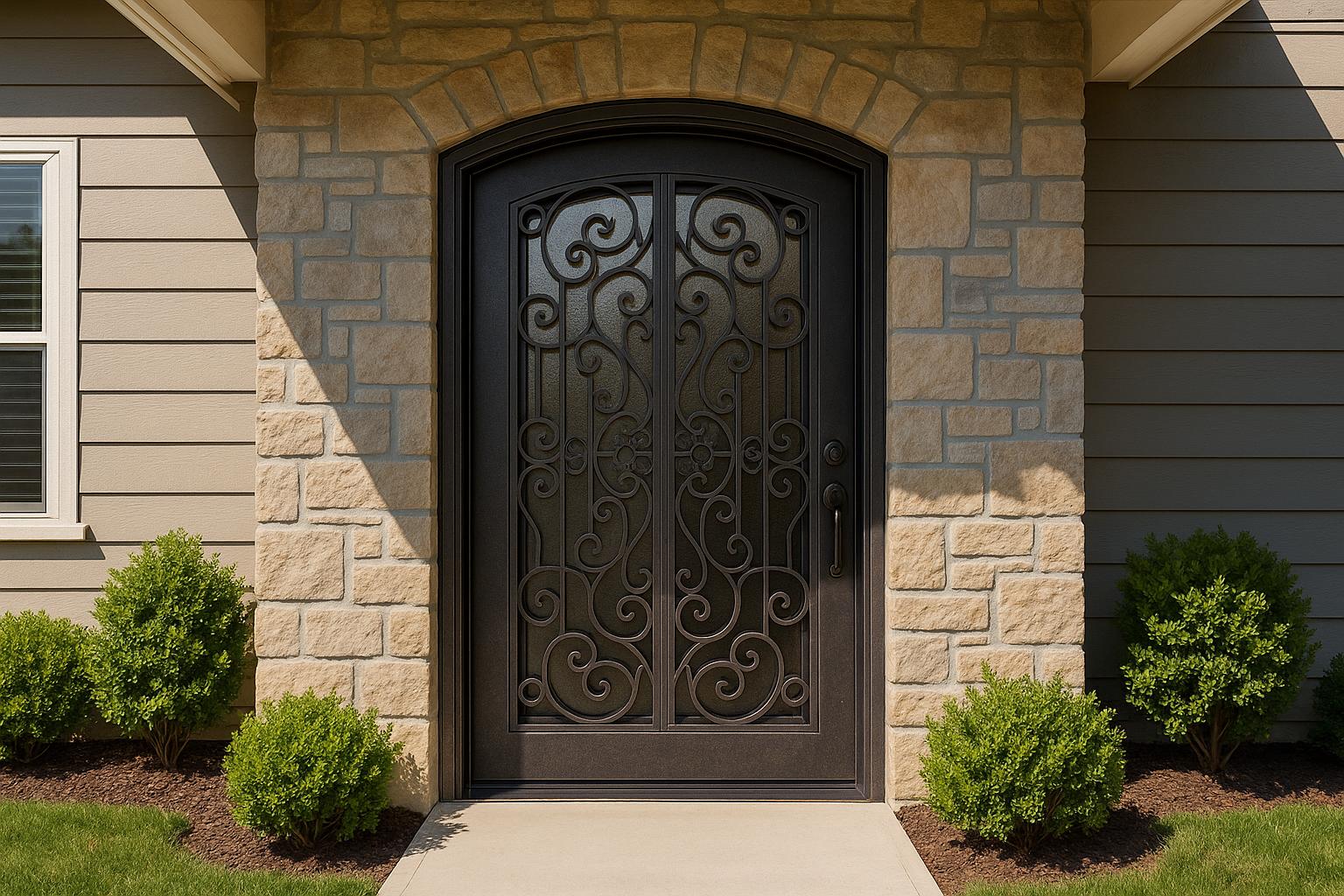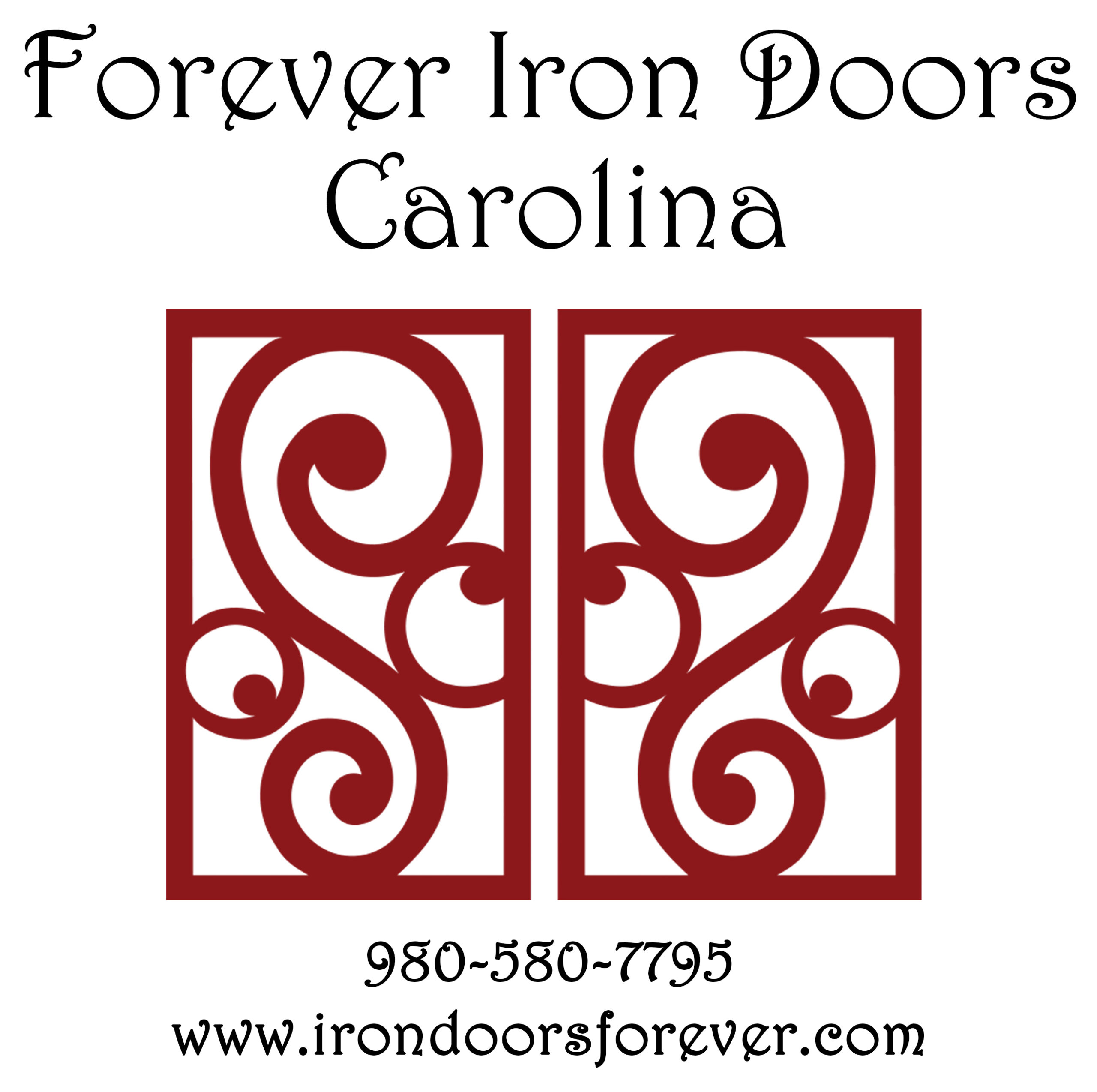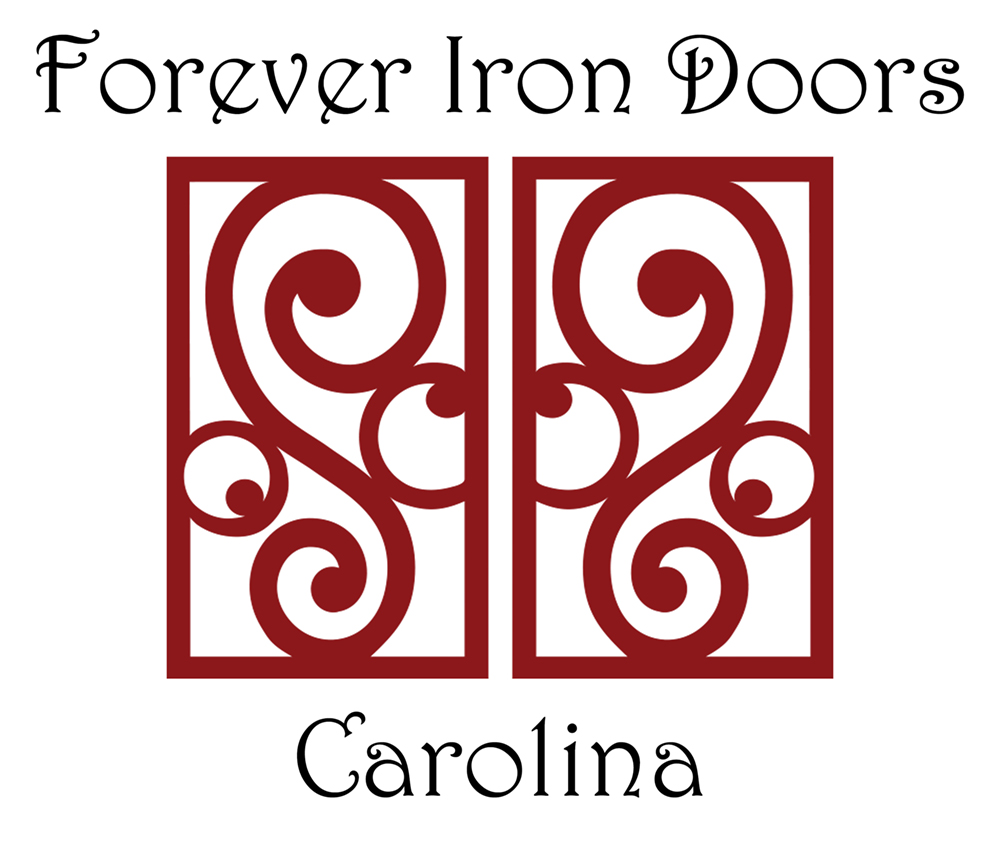When buying a custom iron door, the right choices can improve your home’s security, energy efficiency, and curb appeal. This guide simplifies the process by highlighting key factors to consider, ensuring your investment lasts for decades. Here’s what you need to focus on:
- Material Quality: Choose thick, solid wrought iron with protective coatings like powder or galvanized finishes to prevent rust. Look for seamless welding and high-quality glass inserts for durability and energy efficiency.
- Design Fit: Match the door’s style to your home’s architecture (e.g., ornate for Mediterranean, clean lines for modern). Customize glass, hardware, and finishes to suit your preferences.
- Security Features: Opt for multi-point locking systems, reinforced frames, and impact-resistant glass for better protection. Fire-rated options can add an extra layer of safety.
- Energy Efficiency: Look for insulated cores, thermal breaks, and weather-sealed designs. Double or triple-pane glass with Low-E coatings can reduce energy costs.
- Accurate Measurements: Proper dimensions ensure a seamless fit. Measure rough openings, jamb sizes, and any unique features like arches or sidelights.
- Professional Installation: Skilled installers can handle heavy doors, ensure proper sealing, and fix any framing issues, saving you time and potential repairs.
- Maintenance: Regular cleaning, rust prevention, and hardware lubrication are crucial for longevity. Use wax-based sealants and avoid harsh cleaners.
- Warranty: Check for coverage on materials, finishes, and installation. Keep maintenance records to ensure compliance.
1. Check Material Quality and Durability
The materials used in your wrought iron door play a huge role in determining how long it will last. A well-made wrought iron door can serve your home for 30–50 years. This kind of longevity makes choosing the right materials a critical step.
What to Look for in High-Quality Wrought Iron
When evaluating wrought iron doors, focus on these key aspects:
- Material thickness: Solid or forged wrought iron doors are far superior to hollow ones. Thicker iron resists warping and ensures the door remains structurally sound over decades.
- Surface coating: Protective finishes like powder coating or hot-dip galvanization are essential to keep rust at bay. Always ask about the type of coating used and its thickness.
- Seamless welding: High-quality doors feature smooth, continuous welds at joints, which prevent weak spots where air or water could seep in. Poorly welded doors often show gaps and rough edges.
- Glass infill quality: The glass should be tightly sealed within the iron framework to block air and water infiltration. This not only enhances durability but also improves energy efficiency.
Here’s how wrought iron compares to steel in some key areas:
| Feature | Wrought Iron | Steel |
|---|---|---|
| Tensile Strength | Excellent (more flexible under pressure) | High (but more brittle) |
| Design Flexibility | High (can be handcrafted into custom shapes) | Medium |
| Rust Resistance | High with proper coating | Moderate |
| Luxury Appeal | Premium, artistic | Industrial, modern |
"Most scratches on iron doors are superficial and can be easily repaired with touch-up paint. The key is using the right products and applying them carefully."
- Mark Johnson, Iron Door Specialist
Next, it’s important to understand how local weather and building codes might influence your choice of materials.
Weather and Building Code Requirements
Beyond material quality, your wrought iron door must withstand local weather conditions and meet building codes. Weatherproofing is especially important in areas with extreme temperatures, high humidity, or frequent precipitation, as these factors can speed up wear and tear.
Building code compliance ensures your door is safe and aligns with local regulations. These codes often include rules about door size, material strength, and installation techniques. Specific requirements, such as weight limits or security features, can vary depending on your location.
Standards like the International Building Code, International Energy Conservation Code, and NFPA fire safety guidelines set the baseline for material and installation expectations.
"Building codes incorporate the minimum fire safety and fire prevention practices into the initial construction phase and installation of the systems into the new building."
For accessibility, ADA compliance is another key consideration. This includes factors like door weight, handle height, and the force needed to open the door, which can all affect material specifications.
Some areas also require permits and inspections for installing iron doors. Ignoring these rules can result in fines, delays, or even legal trouble.
To maintain weatherproofing, use durable weatherstripping materials and high-quality sealants at material junctions. These small details go a long way in ensuring your door stays sealed and performs well over time.
2. Pick a Design That Matches Your Home
After considering material quality, selecting a design that aligns with your home’s character can elevate both its look and functionality. The right iron door should not only complement your home’s architecture but also reflect your personal style.
Match Your Home’s Architecture
Every architectural style has its own personality, and your iron door should fit right in:
- Traditional Homes: Opt for ornate scrollwork and timeless finishes like black or bronze to maintain a classic look.
- Modern Homes: Clean geometric patterns, minimal hardware, and bold colors like black, white, or gray work well for a sleek, contemporary vibe.
- Contemporary Homes: These designs balance clean lines with subtle touches, often featuring matte black or brushed nickel finishes for understated elegance.
- Mediterranean Homes: Intricate scrollwork, arched tops, and rustic finishes in bronze or copper echo the Old World charm of this style.
- Craftsman Homes: Simple lines and geometric patterns paired with natural finishes like dark bronze or oil-rubbed bronze highlight the functional beauty of this design.
- Farmhouse-Style Homes: Rustic, clean lines are key here. Textured or seeded glass can add a vintage feel while enhancing privacy.
Once you’ve matched your door’s design to your home’s style, consider customizing its details to make it uniquely yours.
Available Customization Options
Customizing your iron door allows you to fine-tune its features, including glass accents, finishes, and decorative patterns, to suit your preferences.
Glass Options offer a balance between natural light and privacy, with choices including:
| Aquatex | Clear | Diamond Blast |
|---|---|---|
| Diamond | Flemish | Frosted |
| Green Tinted | Rain | Reeded |
| Ripple | Sandblast | Sea Glass |
| Tea | Watercubed |
Clear glass creates an open and inviting atmosphere, while frosted or textured glass adds privacy without compromising style. Stained or beveled glass can introduce an artistic element, casting unique light patterns inside your home.
Hardware and Finishes are essential for tying your door’s look to your home’s exterior. Choose handles and finishes that complement your home’s color palette. Popular options include black, bronze, nickel, and copper.
Decorative Patterns range from simple geometric designs to intricate scrollwork. The key is choosing a pattern that enhances, rather than overpowers, your home’s architectural details.
The design process for custom iron doors involves collaborating with designers to ensure every element works in harmony. This teamwork helps you avoid common design mistakes and creates a door that perfectly enhances your home’s overall aesthetic.
3. Focus on Security Features
When selecting a custom iron door, prioritizing security is essential. Considering that over 80% of break-ins occur through front or first-floor doors, having a door with strong security features can make all the difference between a safe home and a vulnerable one. Iron doors provide a higher level of protection against break-ins compared to wood, fiberglass, or vinyl options.
Locks and Frame Reinforcements
The security of an iron door starts with its locking system and frame construction. Multi-point locking systems are a smart choice, as they secure the door at multiple points along the frame, making it much harder for intruders to force entry. Look for locks with reinforced strike plates and heavy-duty deadbolts for added reliability. Pair this with a frame made of reinforced steel to resist force.
Glass elements can add style, but they shouldn’t compromise security. Opt for impact-resistant, double- or triple-glazed glass. For even greater protection, tempered glass inserts with wrought iron accents provide visibility while standing up to forced entry attempts.
Adding security bars or decorative grillwork to your door can serve two purposes: enhancing its appearance and acting as an extra layer of protection. Features like one-way glass or peepholes let you see who’s outside without opening the door, offering an additional level of safety.
Safety Standards and Certifications
Beyond physical reinforcements, ensuring your door meets safety standards is critical. Custom iron doors should comply with industry safety regulations and pass all necessary testing for your region. Adhering to local building codes is not just a requirement but also ensures proper installation and maximum security.
Fire-rated iron doors can provide another layer of protection, with some models designed to endure high heat for extended periods. If you’re considering a fire-rated option, make sure all components – locks, hinges, and door closers – are also fire-resistant. For doors with glass elements, confirm that both the door and the glazing meet fire safety standards.
To guarantee compliance, work closely with your door manufacturer and local building authorities. Regular maintenance is equally important: inspect locks, hinges, and other components routinely to ensure they remain in good working condition over time.
4. Consider Energy Efficiency
Choosing an energy-efficient custom iron door doesn’t just enhance your home’s comfort – it can also lower your utility bills. Did you know that heat loss and gain through windows and doors make up 25% to 30% of residential heating and cooling energy use? By selecting the right features, you can reduce these costs while keeping your home secure and stylish.
Insulation and Weather Sealing
Insulation and weather sealing are the backbone of an energy-efficient iron door. Many modern designs use polyurethane foam insulation within the door’s core to help regulate indoor temperatures. Additionally, thermal breaks are often included to cut down on heat conduction.
Weather sealing is equally important. High-quality weatherstripping – made from materials like rubber, silicone, or magnetic compounds – creates a tight seal around the frame, reducing air leaks. To maintain this efficiency, make it a habit to inspect and maintain weatherstripping and caulking annually.
Energy Ratings and Glass Types
Energy ratings can tell you a lot about a door’s insulation performance. Look for labels from the National Fenestration Rating Council (NFRC), which provide metrics like the U-factor and Solar Heat Gain Coefficient (SHGC). A lower U-factor means better insulation, while the SHGC measures how well the door manages solar heat.
Doors with ENERGY STAR certification can cut energy bills by up to 12%. For the best results, consider models with double or triple-pane insulated glass units (IGUs). These often include inert gas fills and Low-E coatings to improve insulation. Single-pane glass, on the other hand, is far less effective at retaining heat. If you live in a particularly sunny or warm climate, tinted or reflective glazing can help manage solar heat gain. Adjust the SHGC rating to match your local climate needs.
Lastly, proper installation is key. Even the most energy-efficient door won’t perform well if it’s not installed correctly. A professional installation ensures a continuous thermal barrier and prevents air leaks. When you invest in energy efficiency, you’re not just enhancing your door – you’re boosting your home’s overall performance.
sbb-itb-cd90297
5. Plan for Measuring and Installation
When it comes to custom iron doors, precise measurements and skilled installation are just as important as material quality and design. Without accurate dimensions, adjustments after fabrication can be challenging and costly, both in time and money.
Record Precise Dimensions
To start, gather the essentials: a tape measure, level, pencil, paper, and a ladder if you’re working with taller openings. Remove the interior trim to access the rough opening for more accurate measurements [27, 28]. Be thorough – measure at multiple points to account for any settling or warping over time. For width, take readings at the top, middle, and bottom of the opening, and use the smallest measurement [27, 28]. Similarly, measure the height at both sides and the center, recording the smallest dimension [27, 28].
Key dimensions to record include:
- Rough Opening: Measure horizontally from stud to stud and vertically from the floor to the header.
- Jamb Size: This corresponds to your wall’s thickness, factoring in drywall or siding.
- Additional Features: Note any sidelights or transoms included in your design.
- Structural Reinforcement: Plan for reinforcing the studs around the rough opening to support the weight of the iron door.
Double-check that the frame is square by measuring diagonally across the opening. If the diagonals aren’t equal, note the discrepancy so adjustments can be made during installation. Keep in mind, older homes may have larger or non-standard door openings compared to modern builds.
For arched doors, measure from the floor to the spring point (where the arch begins) and separately to the peak of the arch. Also, record the width at the widest part of the opening.
Once you’ve gathered these precise measurements, you’ll be ready for the next step: professional installation.
Benefits of Professional Installation
While accurate measurements lay the groundwork, professional installation ensures your iron door performs beautifully for the long haul. Experienced installers are familiar with the structural demands of heavy iron doors, making sure the framing is properly reinforced and that seals are tight to prevent moisture intrusion and maintain energy efficiency.
They also excel at resolving challenges like uneven walls or framing issues, which can be common in older homes. Plus, they can spot potential problems during the measurement process that might otherwise go unnoticed. When sharing your measurements with the installer, make sure to explain how they were taken so any necessary adjustments can be made.
A professional installation minimizes risks like air leaks, water damage, and misalignment, ensuring your custom iron door operates smoothly for years to come. Given the complexity and weight of these doors, trusting the job to a professional is a smart investment in both functionality and durability.
6. Plan for Maintenance and Care
A custom iron door is more than just an entryway – it’s an investment in your home’s security and style. To keep it in top condition for years to come, regular maintenance is essential. Wrought iron, while durable, needs specific care to prevent rust and maintain its appearance and strength. Plus, staying on top of upkeep ensures your door remains energy-efficient and secure.
How to Clean and Maintain Your Door
Monthly Cleaning Routine
Cleaning your iron door regularly – monthly or even biweekly during high-pollen seasons or after storms – is key to preventing buildup and corrosion. Homes in humid or coastal areas may require extra attention compared to those in drier regions.
Start by dusting the door to remove water-soluble salts that can lead to rust. For a deeper clean, mix warm water with a small amount of liquid castile soap. Focus on decorative areas where dirt tends to collect, then rinse thoroughly with clean water. Dry the door immediately with a soft, lint-free cloth or sponge to avoid moisture damage. Steer clear of harsh cleaners or abrasive materials – these can harm the finish and expose the metal to rust.
Rust Prevention and Repair
Every three months, inspect your door for rust spots, loose hardware, or paint damage. If you spot rust, act quickly. Use a wire brush, fine sandpaper, or a detail sander to remove the rust, then clean the area thoroughly. Apply a rust-inhibiting primer and finish with a matching metal paint to restore the door’s protective coating.
Protective Coatings
To safeguard the finish, apply a wax-based sealant every six months – or quarterly if you live in a humid or coastal area. For powder-coated doors, use a non-abrasive car wax with UV protection to shield the coating from sun damage. Avoid compound-style waxes or chemicals that could degrade the protective layer.
Caring for Hardware
Hinges and hardware need attention, too. Lubricate hinges 2–4 times a year with products like WD-40 or hinge-specific oils, and wipe away excess to prevent dirt buildup. Also, check handles, locks, and decorative elements to ensure they’re secure and functioning properly.
By combining regular cleaning, rust treatment, and hardware care, your iron door will stay functional and beautiful. For more details, check out this step-by-step guide on cleaning iron doors.
Warranty and Support Services
In addition to routine care, understanding your door’s warranty coverage ensures your investment is protected.
Warranty Details
Look for warranties that cover materials, finishes, and installation. Many high-quality manufacturers offer lifetime warranties for the door itself, covering factory defects in materials and workmanship. However, coverage for specific components varies – factory-applied finishes might last 5–10 years, insulated glass 5 years, and weather stripping or latches around 1 year. Some finishes, like matte black, may have shorter warranty terms.
Transferability and Installation
A transferable warranty, often valid for up to three years after installation, can add resale value to your home. Additionally, check if your installer offers warranty coverage for their work. Some manufacturers require approved installers to keep the warranty valid.
Keeping Your Warranty Valid
Most warranties come with maintenance requirements, so following the care guidelines is crucial. Keep in mind that warranties typically exclude damage from improper installation, misuse, severe weather, or accidents [39–42]. Maintaining detailed records of your cleaning and repairs, including the products used, is a smart way to ensure compliance.
Post-Warranty Support
Even after the warranty period ends, many manufacturers provide repair, refinishing, or replacement services at reasonable costs. These options can help maintain your door’s appearance and functionality for years.
Inspection and Claims
Inspect your door as soon as it arrives, documenting any damage before installation. Familiarize yourself with the claims process, including required documentation and deadlines. Keep all warranty paperwork, installation records, and maintenance logs organized for easy access if needed.
7. Make the Right Choice for Your Home
Selecting the perfect custom iron door means finding the right blend of style, security, and practicality. Your door should not only enhance your home’s architectural charm but also deliver reliable protection and functionality for years to come. Here’s a quick summary of the key factors to help you make a confident choice.
Revisit Your Priorities
Before finalizing your decision, take another look at the essentials. Focus on durability by opting for high-quality wrought iron with rust-resistant coatings. Ensure the design complements your home’s overall aesthetic. Security should remain a top priority – features like reinforced frames and multi-point locking systems are non-negotiable. And don’t forget energy efficiency; elements like insulated glass and weather stripping should suit your local climate.
Set a Realistic Budget
Custom iron doors can vary widely in price. Basic models start at around $200, while intricate designs can exceed $5,000. Decide on a clear budget and stick to it, reserving any extra funds for features that genuinely add value. Avoid spending on unnecessary extras that don’t align with your priorities.
Work with a Trusted Vendor
Do your homework when choosing a vendor. Look for companies with strong reputations and positive customer reviews. Examine samples or past installations to gauge quality and design options. Be sure to ask about warranties that cover materials and workmanship, and clarify the process for handling repairs or replacements.
Prioritize Professional Installation
Once you’ve chosen your vendor, plan for professional installation. Proper installation is key to ensuring your door performs well and lasts for years.
Think About Long-Term Benefits
A custom iron door is more than just a purchase – it’s an investment. It can enhance your home’s curb appeal and boost its security, which may increase property value. High-quality iron doors also age well, requiring minimal maintenance while retaining their visual appeal.
Inspect and Organize
When your door is delivered, inspect it immediately for any damage. Address any issues with your vendor as soon as possible. Keep all warranty information, installation records, and maintenance instructions in one place. Knowing how to care for your door from the start will help preserve its security, efficiency, and appearance.
FAQs
What makes custom iron doors a better choice than wood or fiberglass doors?
Custom iron doors are known for their incredible durability, standing up to harsh weather, pests, and physical damage far better than materials like wood or fiberglass. This makes them a solid, long-term choice for your home.
They’re also a fantastic option for security, offering unmatched strength and built-in safety features that help protect your household. Beyond their practicality, custom iron doors can be crafted to perfectly complement your home’s architectural style, adding a touch of elegance and boosting your home’s curb appeal.
On top of that, these doors can be designed with energy-efficient insulation, blending style and functionality to improve both your comfort and your home’s overall value.
How can I make sure my custom iron door meets local building codes and handles the weather in my area?
To ensure your custom iron door meets local building codes and stands strong against your area’s weather, start by reviewing the specific requirements for dimensions, accessibility, and safety standards in your location. Weatherproofing is key – using weather stripping not only boosts energy efficiency but also helps guard against air and water leaks.
Your door should also be designed to withstand the weather challenges unique to your region, whether that means hurricanes, strong winds, or freezing temperatures. Many regions have certifications or ratings that doors must meet for durability and insulation, so make sure yours checks those boxes. And don’t overlook the importance of securing the right permits and following local installation guidelines to ensure both compliance and long-term safety.
How can I keep my custom iron door looking great and protect it from rust?
To maintain your custom iron door and keep rust at bay, make regular cleaning a habit. Use a soft cloth and mild soap to gently remove dirt and debris. Every 6–12 months, apply a protective sealant or wax to shield the surface from moisture and corrosion. If you notice any scratches or chips in the finish, take care of them promptly to stop rust from taking hold.
Keep the hinges in good condition by ensuring they’re well-oiled and made from rust-resistant materials. Also, proper drainage and good airflow around the door can help reduce moisture buildup, preserving both its look and durability.



